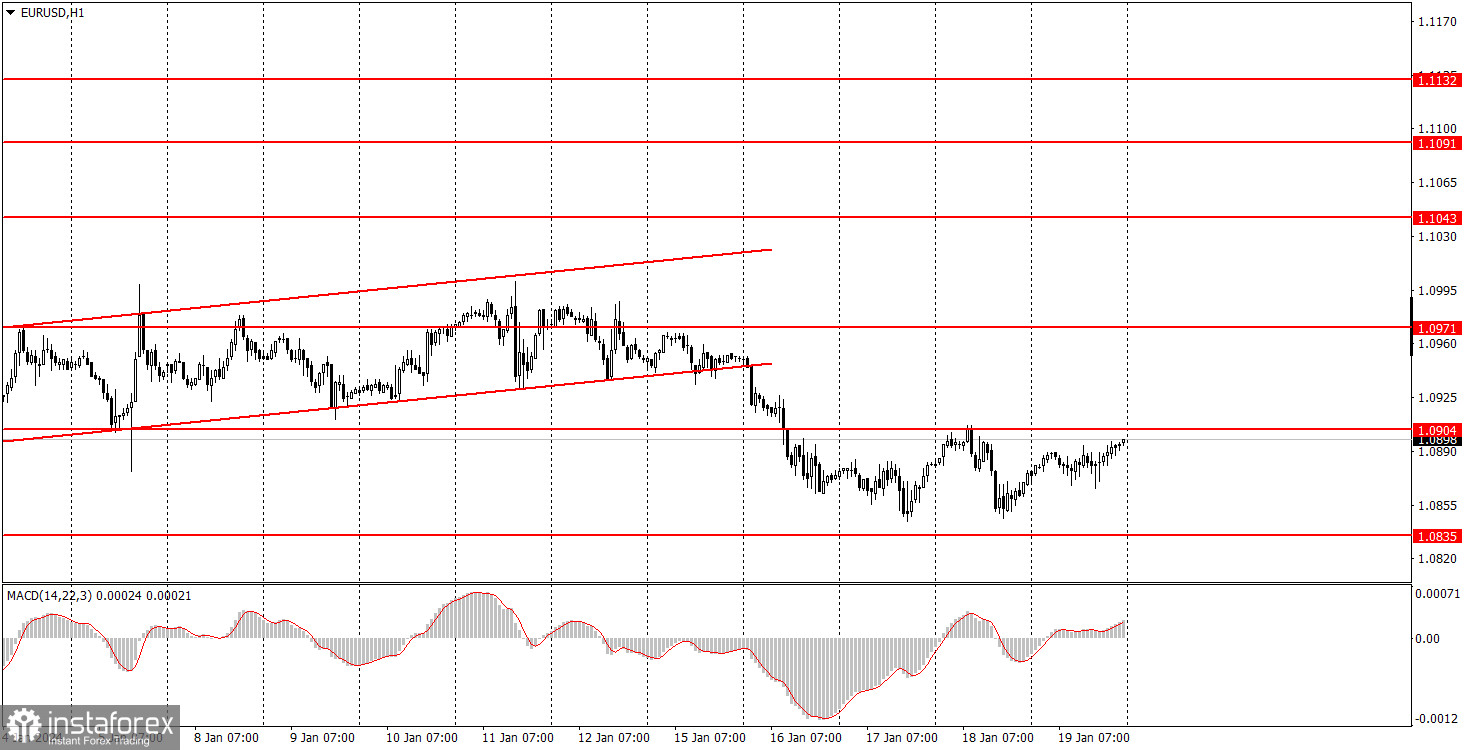Analysis of macroeconomic reports:

There are no economic events scheduled for Monday. Therefore, the currency pairs are unlikely to show strong trend movements. The British pound will likely stay within the sideways channel and may not even attempt to break out of it. The euro has recently been stuck between the levels of 1.0835 and 1.0904 and is also likely to remain in a sideways channel.
Analysis of fundamental events:

There are hardly any fundamental events on Monday. The key event of the day will be European Central Bank President Christine Lagarde's speech, who spoke three times last week. In all cases, her rhetoric was not resonant, but she did mention that the ECB could start lowering rates closer to the summer. The euro started to lose fundamental market support because the market expected a later start to the interest rate cut cycle. However, now we need new factors for selling the euro. The ECB meeting is approaching, so Lagarde will likely share all the important remarks on Thursday, not Monday.
General conclusion:
On Monday, we can highlight Lagarde's speech as the key event of the day. However, that's a stretch. There is a chance that she will repeat the phrase about the possible start of the rate cut cycle earlier than the beginning of summer, but there is a higher probability that she will save all the important comments for Thursday. As for the British pound, the fundamentals and macroeconomics are absolutely insignificant as long as the price stays within the sideways channel of 1.2611-1.2787.
Basic rules of a trading system:
1) Signal strength is determined by the time taken for its formation (either a bounce or level breach). A shorter formation time indicates a stronger signal.
2) If two or more trades around a certain level are initiated based on false signals, subsequent signals from that level should be disregarded.
3) In a flat market, any currency pair can produce multiple false signals or none at all. In any case, the flat trend is not the best condition for trading.
4) Trading activities are confined between the onset of the European session and mid-way through the U.S. session, after which all open trades should be manually closed.
5) On the 30-minute timeframe, trades based on MACD signals are only advisable amidst substantial volatility and an established trend, confirmed either by a trendline or trend channel.
6) If two levels lie closely together (ranging from 5 to 15 pips apart), they should be considered as a support or resistance zone.
How to read charts:
Support and Resistance price levels can serve as targets when buying or selling. You can place Take Profit levels near them.
Red lines represent channels or trend lines, depicting the current market trend and indicating the preferable trading direction.
The MACD(14,22,3) indicator, encompassing both the histogram and signal line, acts as an auxiliary tool and can also be used as a signal source.
Significant speeches and reports (always noted in the news calendar) can profoundly influence the price dynamics. Hence, trading during their release calls for heightened caution. It may be reasonable to exit the market to prevent abrupt price reversals against the prevailing trend.
Beginners should always remember that not every trade will yield profit. Establishing a clear strategy coupled with sound money management is the cornerstone of sustained trading success.





















